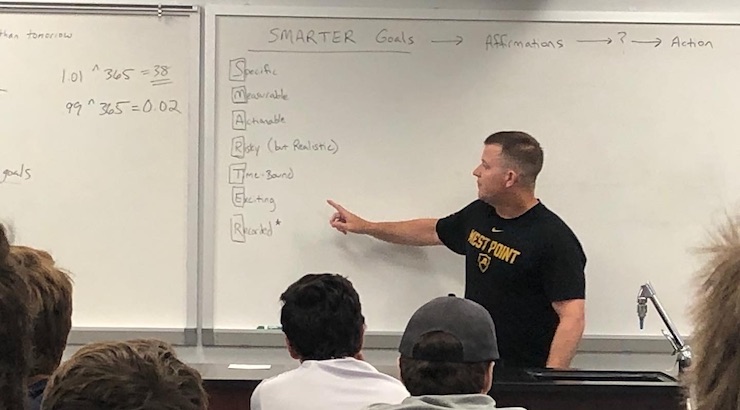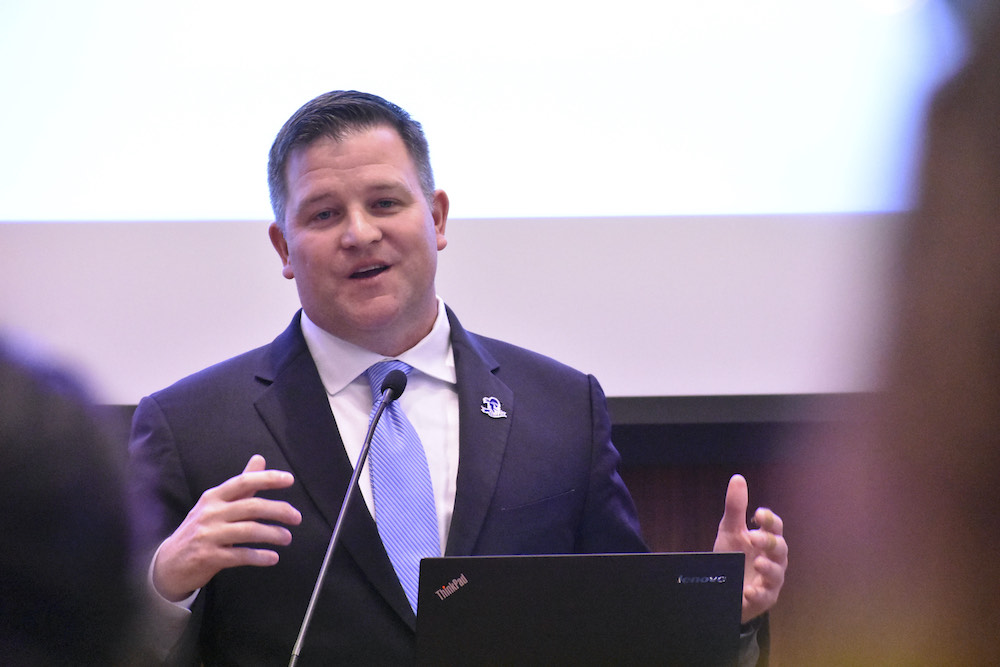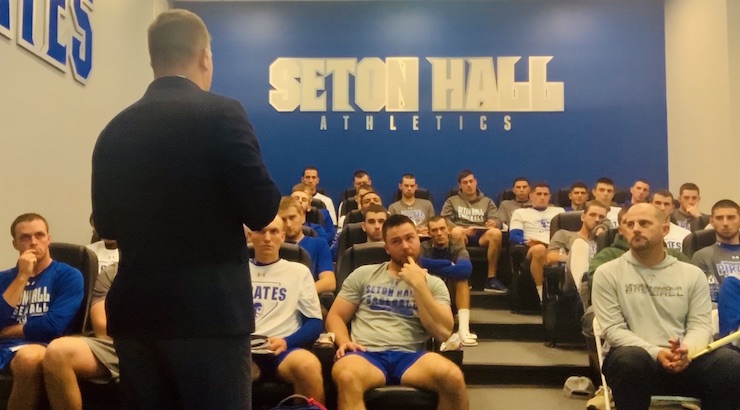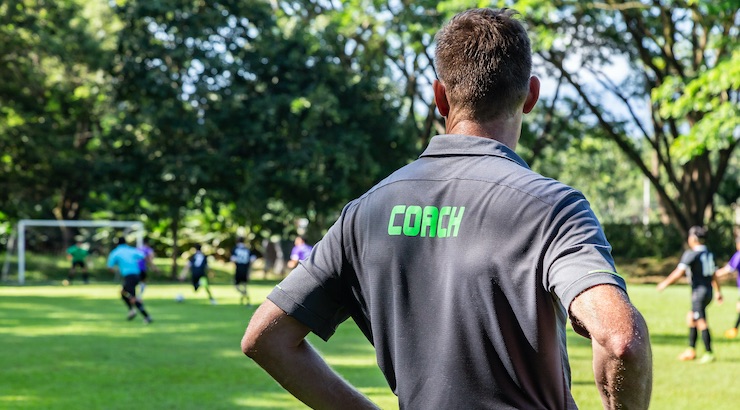The Leadership Crisis in Youth Sports Today
Why are today’s players more mentally and emotionally fragile than ever? Why are there fewer leaders?
I was 12 years-old and playing in my Little League’s championship game in 1988. I was the team’s shortstop and batted third in the lineup, but in the top half of the first inning, I struck out looking (on a pitch that was way off the plate) to end the inning.
I was upset.
On my way back to the dugout to retrieve my glove, I threw my helmet. It skipped off the ground, ricocheted off the chain-link fence, and grazed one of my teammate’s legs as he was emerging from the dugout. Startled, he reactively said “ow” loud enough for the coach to hear.
My coach turned around, quickly pieced together what had happened, and barked, “did YOU throw that?”
I nodded sheepishly, and he told me to go sit on the bench. The biggest game of my life was only three outs old, and I was done for the day. I felt humiliated and ashamed.
The most embarrassing part was when good-natured team parents poked their heads into the dugout to ask why I wasn’t playing – was I injured? Each time, I had to explain that I had thrown my helmet and Coach had pulled me from the game.
Worse, we lost the championship, leaving me with even more guilt over the consequences of my immature behavior.
If that incident occurred in today’s youth sports climate, parents would likely lobby to get the coach fired.
Today, parents might pull their child from the team, and find a new travel club to play on.
But it was a different time. Both of my parents were completely supportive of the coach’s decision to bench me because they saw it as a leadership lesson, especially my Dad. Why? Because he was the coach who pulled me.

The Good and Bad of Youth Sports Today
Today, the enterprise of youth sports is optimized to develop individual athletes, not great leaders. It used to do a better job of developing leaders, even if that development was largely unintentional, but times have changed.
There are so many aspects of youth sports today that are orders of magnitude better than when I was growing up. There’s better coaching, facilities, equipment, and opportunities to play against better competition at younger ages.
Opportunities for leadership development, however, are not one those improvements. In fact, they’ve gotten worse.
Sports and leadership have played important roles in my life. I was a 3-sport athlete in high school and played baseball at West Point, co-captaining the team as a senior. I’ve coached at the recreational, high school, and Division-I level.
I served for 20 years as an Army officer, almost half of which I spent developing leaders as a professor at West Point, and today I lead the Buccino Leadership Institute at Seton Hall University.
I also run a mental performance business called Top Mental Game where I work with athletes in high school and college all over the country. And finally, I’m also a dad, with a daughter who plays competitive soccer on a team that’s currently the top-ranked team in the country for her age group.

Once upon a time, youth sports was the largest and most effective leadership factory for the masses. No longer. Below are five reasons why leadership development is getting worse in the current climate of youth sports and why it matters.
1. Youth sports today is almost 100% structured, meaning adults organize every practice and game.
Growing up in the 1980s, I played in what would now be known as recreational leagues for soccer, basketball, and baseball. Some leagues had practices during the week, but most of my time was spent playing pick-up games on local fields and courts with other kids. No adults to be seen.
Today, the opportunities for organized athletics are endless. There are recreation leagues, travel teams, and even academies for young athletes to compete at a variety of levels. And when there are no organized practices for these teams or leagues, parents can fill up the remaining time with private instructors for specialized training.
As I mentioned earlier, these opportunities are awesome for an athlete’s physical and skill development, but they provide few opportunities for leadership development.
Kids rarely get the chance to organize a game, pick teams, create and enforce rules, settle disputes, and hold peers accountable to social norms.
In other words, today’s young athletes never get to lead.
Instead, at seemingly every turn, adults tell them when and where to practice, what to wear, and what to do.

2. Individual development is over-emphasized in youth sports today. That’s great for developing individual athletes, but bad for developing leaders.
The two most popular buzzwords in youth sports today are individual development. Regardless of your child’s skill level, there’s an organized league to accommodate it. That’s a good thing.
While it’s debatable how successful various leagues, teams, and organizations are at successfully developing individual talent, the emphasis on the individual trumps the interests of the team. From a leadership perspective, that can be a bad thing. Worst case, it sends the message that everything – playing time, scheduling, strategy, accountability – revolves around the needs of the individual.
If what’s best for the individual always trumps what’s best for the team in youth sports, why should we expect players to care about, let alone lead, others on their team?
The reality is we shouldn’t expect that, because the emphasis on individual development provides little incentive for athletes to focus on anything other than themselves.

3. The rise in travel leagues creates disincentives for athletes to lead.
The advent of travel leagues has irrevocably changed the landscape of youth sports, in some cases replacing high school teams as the sole focus of teenage players. As previously mentioned, this has led to a ton of positives, but leadership development is not one of them.
At the heart of leadership is the concept that you work with others to accomplish something bigger than yourself.
That concept is front and center in high school sports, where athletes are part of an interwoven community of friends, classmates, bands, cheerleaders, teachers, and coaches. Teams compete against rival schools. Games include fans hyped up on school spirit and traditions passed down from previous generations.
Athletes on travel teams, on the other hand, rarely have that same sense of belonging. Teammates and coaches can be temporary, transient figures that frequently come and go, and are usually only seen at practices or games. The name on the front of their uniform doesn’t really mean anything to players, and often the only “fans” that come to watch are parents.
Furthermore, college athletic budgets are shrinking, especially travel budgets for recruiting. To maximize their travel dollars, college coaches are more likely to strategically target a few travel league showcase tournaments than go to individual high school games. These showcase events are great for showcasing physical talent and combine-like skills, but they are not great for showcasing intangibles like leadership.
Yet ask any college coach about the biggest differences between players today versus 20-30 years ago, and almost every one will complain about an increase in player entitlement that puts the “me” before the “we.” They will say players may be bigger, faster, stronger, and more technically skilled than in the past, but today’s players are more mentally and emotionally fragile than ever. There are fewer leaders.

4. Travel coaches are incentivized to promote individual development over the team.
Players today have access to better, more technical coaching than ever.
The level of coaching is light years from when I was growing up, when most youth coaches were volunteer moms and dads, some with little to no experience playing the sport, let alone coaching it.
But while the big business of youth sports has attracted professionals to coach at younger and younger ages, the incentive structure for travel coaches is just different from the volunteer coaches of the past.
Since travel teams now exist to develop individual athletes, and travel teams exist only when parents are willing to pay for them, then travel coaches are incentivized to convince parents that playing for them is worth the investment.
In other words, the livelihood of travel coaches literally depends on attracting and appeasing players and parents.
To do that, coaches and club directors have to convince parents the benefits outweigh the considerable costs. And even for the most scrupulous of travel coaches, this usually means giving rose-colored evaluations to parents and optimistic predictions of their child’s future potential to play at the next level.
Compare these incentives to those of public high school coaches. At the end of the day, high school coaches answer to the school’s administration, not individual parents. While all coaches want to develop individuals on their team, for the high school coach, the team and the program are (usually) more important than any individual.
In a recent phone call with high school coaches from one of New Jersey’s best athletic programs, the was unanimous consensus that their number one mission was to produce better men, not necessarily to produce better baseball players. The head coach added that the advent of travel baseball has made that mission more difficult because he felt the emphasis was reversed on travel teams.
I’m not saying that coaches at the high school level don’t have to appease parents. They do. But if five kids quit their team and transfer to another program, it won’t stop that school from ultimately still fielding a team, and that coach is still going to get paid.
And unlike travel teams where clubs are financially rewarded for each player who signs up, high school coaches don’t financially benefit from having more kids on their team. For high school coaches, appropriately disciplining a player may bring its own issues with parents, but it won’t cost the school any money (at least in the public school system) or jeopardize the coach’s livelihood.
So instead of using sports as a vehicle to teach life and leadership lessons about discipline, sacrifice, and teamwork as was done in the past, these issues most often take a backseat for many travel coaches for fear of alienating players and scaring away over-protective parents.
5. Too many helicopter parents are intent on preparing the path for their child instead of preparing the child for the path. The pay-to-play aspect of youth sports only reinforces that reality.
I can remember my parents lamenting about the “exorbitant” costs of signing me up for Little League, which at the time was about $250. That paid for my uniform, the umpires, some team equipment, and of course, some money to stock the snack shack.
Today, parents can spend thousands of dollars every year for travel teams, personal trainers, showcase tournaments, and camps, not to mention their own travel expenses to attend games. And with the large amounts they’re paying, parents demand a return on their investment.
Because they’ve invested a lot of money, parents feel entitled to have more say in their child’s athletic development.
If their child is not starting or is the star of the team in this current youth sports climate, paranoid parents have the mentality that it’s the coach’s fault, the club’s fault, or the fault of other, presumably conspiring parents for not properly “showcasing” their child.
In these cases, parents and their children often switch clubs, even high schools, in the search for a so-called “better situation” for their child’s athletic development.
A youth soccer coach recently told me about a parent who was considering his club. The parent’s first question was “how will joining your team help my daughter make the U.S. Women’s National Team?” The player had just turned 11.
Travel clubs advertise they are a pathway to collegiate athletics and scholarships, and in our current culture, an athletic scholarship is the ultimate status symbol in youth sports.
The problem is that the explosion of youth sports, for both boys and girls, means more competition for those scholarships.
And the irony of it all is that in their myopic quest to earn the coveted athletic scholarship, parents almost always end up paying more money on travel teams and tournaments than their kids get in scholarship money. Furthermore, the involvement of obsessive parents and the pressure they put on their kids is almost always counterproductive to their child’s development, self-esteem, and long-term prospects for athletic success.

Why Does This Matter?
One of the most successful teams in all of sports is the New Zealand men’s rugby team, better known as the “All Blacks.” One of the team’s leadership principles is “better people make better All Blacks.” You can be the world’s best rugby player, but you won’t play for them unless you’re a great person and buy into their unselfish, team-first culture.
Looking at the tea leaves, the incentives for players, coaches, and parents suggest this crisis in leadership development in youth sports will get worse, not better. I for one believe that creating exceptional athletes at the expense of developing great people is bad for sport and society.
Why Does This Matter For Athletes
For today’s athletes, the leadership crisis in youth sports means they don’t have the same opportunities to develop their leadership skills. This translates into athletes who have difficulty managing conflict, coping with adversity, and accepting feedback.
A youth sports culture that over-emphasizes the needs of the individual over the team encourages players and parents to look for someone else to blame (e.g. the coach, the team, the club) when the individual is not seeing the results they think they deserve. Put together, this adds up to athletes who are more entitled, more emotionally and mentally fragile, and less likely to lead themselves, let alone others.
Why Does This Matter For Parents
Many parents may not want to acknowledge it, but they are often a part of the problem in this leadership crisis. Parents have always wanted the best for their children. That will never change.
But what has changed is the money and status involved in youth sports. Youth sports is already big business, and with parents making such large investments in both time and money, the pressure to see a return on those investments is real. That means parents are more involved with coaches and club directors than ever before, inhibiting their ability to develop young athletes as leaders.

Why Does This Matter For Coaches
For coaches, the leadership crisis in youth sports means having to invest more time and effort on teaching basic leadership lessons that, in the past, were learned on the playground or taught at home. With parents more emboldened to challenge any coaching decision that disciplines their child, it’s human nature for coaches to choose the path of least resistance when it comes to holding athletes accountable to teach a leadership lesson for the betterment of the team. Due to the incentives mentioned earlier, it’s especially hard for travel coaches.
This is a shame, because as the adage goes, it takes a village to raise a child. Leadership lessons can definitely be learned at home, but as any parent will tell you, learning those lessons from authority figures outside the home can be more effective than hearing it from a parent.
Given this current alignment of the stars, if young athletes are not learning vital leadership lessons that in the past were learned experientially on their own, from their peers, parents, or coaches who are disincentivized to provide those lessons, then where do we expect them to get them?
There is no question that youth sports today is producing better athletes – they’re faster, stronger, and more skilled. But is the current youth sports climate teaching athletes the leadership lessons they need to become better people? Is it producing better leaders?
The answer to both, unfortunately, is no.
I will be offering a special program on Leadership and Mental Performance with the ultimate goals of helping fill this void in youth sports. I want to help make better people, because like the “All Blacks,” I believe that better people make better athletes. Each month, I will be conducting three live online events – one on leadership, one on mental performance, and one interview of a special guest. Participants will have access to these live events, recordings of previous sessions, and the opportunity to join a community of players, parents, and coaches who can share best practices in leadership and mental performance.
Although I’m charging a subscription fee, please contact me directly if you want to join but don’t have the financial resources to do so. I will add you (or your athlete) for free.





